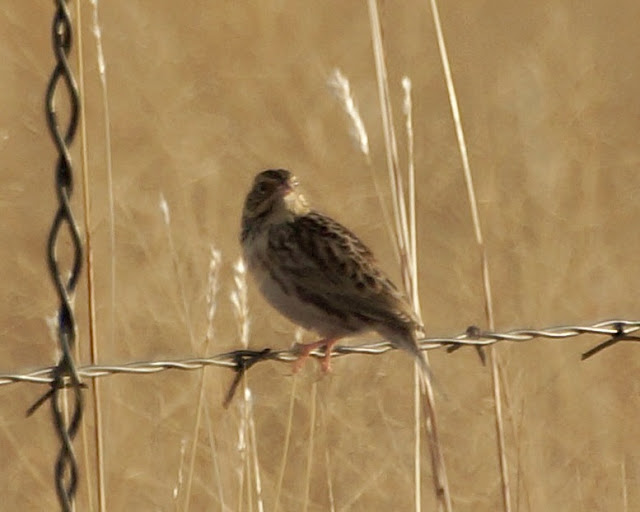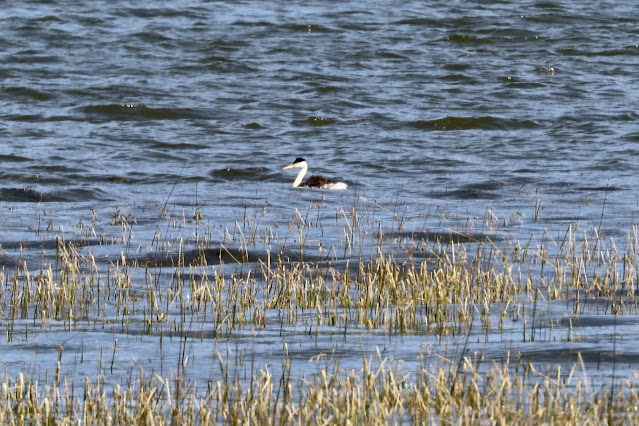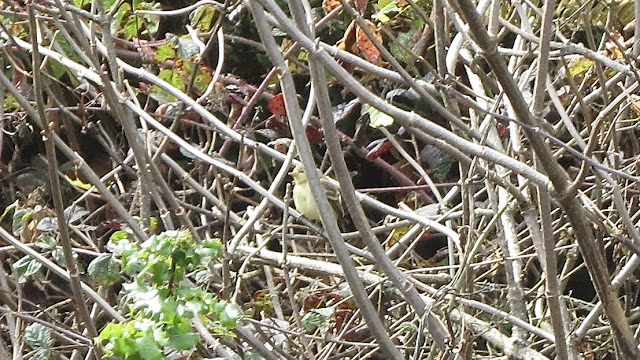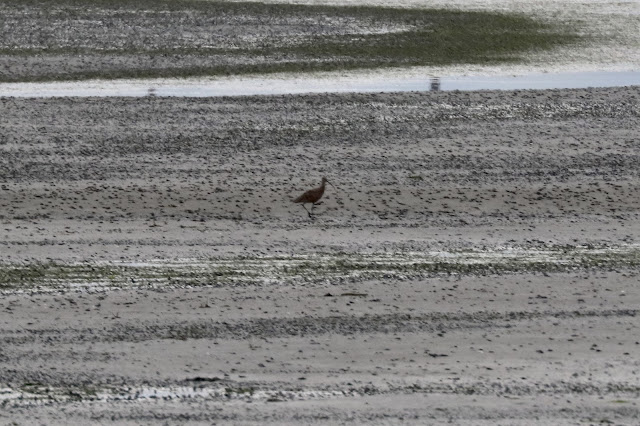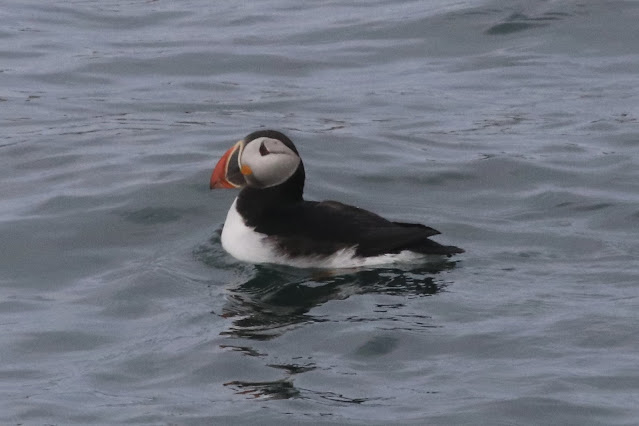Wednesday, 20 July 2022
Sunday, 10 July 2022
Keeping the Home Fires Birding
Live Update, July 8, 4:00pm:
Now comes the tricky bit. I just heard that Via Rail is potentially set to go on strike Monday morning at 12:01am, stopping all rail service across the country. I am booked for a 9:55am departure on Sunday, July 10. No one at Via knows whether or not the train will actually leave yet, leaving customers to contemplate alternate travel plans, and the longer they wait to inform us, the more expensive the cost of making new arrangements.
I am happy to take a full refund and book a flight to Saskatoon via Winnipeg, Manitoba, but I also would like to at least start the train trip and see what happens. However Via will not disclose whether or not the train will leave on time from Toronto, leaving a lot of customers in a bit of a bind.
Live Update, July 9, 3:00pm
I just received an email from Via Rail. The train is now officially leaving Toronto on Sunday morning, but is only going as far as Winnipeg. I can live with that. Even a trunk-aided train ride is still an adventure, and Winnipeg is most of the way to Saskatoon, arriving Monday after dinner. Now I have to arrange accommodations and a rental car in Winnipeg and travel to Saskatoon. Oh, where will this adventure end?
Live Update, July 9, 8:21pm
I just received a phone call from Via Rail explaining the situation and the refund I can expect for the part of the trip from Winnipeg to Saskatoon. Turns out it is not so much. Oh well. I’m still going, and still haven’t made plans for where I am staying or how I am getting to Saskatoon. Only time will tell.
Live Update, July 10, 7:00am
Okay, I have made a decision after thoughtful contemplation and a good sleep. I have made a rental car reservation for Winnipeg to to pick up the car at the airport when I arrive tomorrow evening, and will be able to drop it off in Saskatoon the next day, where I will pick up the previously reserved rental from Enterprise. I still have to decide where I am staying tonight, but I have more than 24 hours to figure that out. This is turning into quite the adventure and I have no idea at this point where it will end.
Live Update: 9:15am
I’m at the station and awaiting the boarding call. When I arrived I was greeted by a concierge who explained the situation and that there was a slim chance the train would go all the way to Saskatoon, and not to request the refund until we get to Winnipeg. I do think that driving from Winnipeg to Saskatoon my be the way to go and might just decide to get off the plane, ahm train, there anyway and drive through the prairies, since I do have that option and already have reserved my rental car.
Let the adventure begin!
Wednesday, 6 July 2022
Voyage to the Atlantic Puffins, and Murre
The last day of June came to an end on the east coast, just has it had on the first day of the year. This time I was in New Brunswick, which was the ninth province or territory I had visited in the first half of the year. In order, not including revisits, I have have been to Nova Scotia, Ontario, British Columbia, Quebec, Alberta, Newfoundland, the Yukon, Northwest Territories, and on this trip, New Brunswick and Prince Edward Island. But my goal in New Brunswick, was to see Atlantic Sea birds, including Northern Gannet, Razorbill, Thick-billed Murre and, of course, Atlantic Puffin.
I had returned from Yellowknife just two days before, on a long and delayed flight through Edmonton and Calgary and count my lucky stars, as Samantha of Bewitched, and my mother often said, that my luggage followed me all the way to Toronto.
Naturally, going to New Brunswick, I was on yet another delayed flight, but like a photon, I was traveling light this time around, so only had a carry-on bag and backpack, with the minimum stuff I needed for a week away, which included the Sea Watch Tours boat trip to see the puffins.
My first stop when I arrived in Saint John, New Brunswick, was Rotary Nature Park and Water Treatment Ponds, as all the best birds are often found at sewage treatment plants. I wanted to get in a little birding before heading to the hotel and a Nelson’s Sparrow had been reported from the park, so i gave it a try. It was nice out and there were plenty of birds, particularly waterfowl, but the only sparrows singing were Song Sparrows.
Beautiful, blue-beaked, breeding plumage Ruddy Duck:
By early evening I realized I needed to get my birdy sleep before I heading to the ferry docks in Blacks Harbor for my trip over to Grand Manan. Sue had stayed there a number of years ago, and recommended the Compass Rose Bed and Breakfast for my accommodations on the island.
I was up early for my drive to Blacks Harbor, hoping to get some birding in before getting to the ferry dock, and saw my first breeding plumage Black Guillemot of the year from the ferry, so that was fun.
Once on the island, I went in search of a Laughing Gull. I tried some eBird Hotspots without any luck, and eventually checked into my room at the lovely Compass Rose. I had to leave by 6:00am, for my puffin trip, so the host said they would put out some breakfast items for me to eat before I left, since the official breakfast wasn’t served until 8am. They also serve dinner there, so I made a reservation for 6:30 and went birding at nearby Castallia Marsh.
On a couple of occasions this year, in Ontario, I was unable to chase down a Laughing Gull during migration along the Great Lakes, and I could hear them laughing behind my back. Lucky for me, a few spend the summer in the Maritime Provinces. Just as I was heading back to my car to go for dinner, I heard a bird overhead “laughing.” I looked up and saw the Laughing Gull circling, and taunting me. But I did get the last laugh, a half decent photo, and species 381 for the year. It was also another Canadian Lifer.
Laughing Gull:
The next morning I was up at 5am, grabbed some breakfast and coffee, and headed out a little early for the boat docks for the puffin trip, knowing I would manage to get lost along the way, which I did. However, I arrived on time, even before a family who also got lost; they went to the ship captains house, that was printed on the brochure. Ooops.
I was prepared for this trip, with a scopolamine patch behind my ear and anti-nausea meds coursing through my blood stream. Once underway, the first bird that the guides called out were a pair of Willson’s Storm Petrels. I got a good look at them, but no photo, as they raced past the boat. Not only was it a great bird for the year list, but yet another Canadian Lifer.
About 90 minutes later we’re approaching the puffin island and our guide asked us all, with a mischievous smile, “Seen any puffins yet?” Seen any? We all laughed. There were hundreds, if not thousands of them. In fact, though I only saw a fraction of them, over 6000 breeding pairs are on the island. There were also Razorbills and Common Murres. Though most of the birders on the trip went on the island, I had booked too late to get on the list, and instead, with one other birder and the guide, we circumnavigated the island on a small skiff. I think we had a better time. The guide even called in the puffins close to the boat with an amazing “puffin call.”
Common Murres:
The Clown-faced Cuties: Atlantic Puffin:
Razorbill:
Fledgling Razorbill:
American Oystercatchers, species 386 for the year and 444 for my Canadian Life List:
I spent the next day on Prince Edward Island and though it is beautiful and scenery is gorgeous, I was disappointed that the only access to the island by car is a single bridge, for which, the government of PEI extracts a $50.25 exit fee at a toll booth when you leave the province. Not exactly the best way to encourage tourists to return. I certainly will think twice before crossing that bridge again. The sad part is that even residents who need to leave the island to shop, see family or for their business or medical reasons, have to pay the fee for the privilege of crossing the fancy bridge.
On my last day in the Saint John area I searched for Northern Gannets. That should have been the easiest bird to see, but they kept eluding me. I finally spotted one in the Bay of Fundy, flying toward Blacks Harbour, while I was birding at Saint’s Rests Marsh. By then, it was a time to get to the airport, where, not surprisingly, both my flights were delayed and instead of getting home by 11pm I wasn’t in bed until almost 2am. Just part and parcel of a Big Year in Post-Covid Travel in Canada.
Northern Gannet:
So, by the numbers, I have visited eight provinces and two territories in the first six months of the year and been away from home nearly 100 of the first 181 days of the year. I’ve seen 387 species, of which 54 were Canadian Lifers, and 9 were new for the ABA List, making me a newly minted member of the ABA 700 Club.
Next stop, Union Station in Toronto, and a nostalgic train ride to Saskatoon, Saskatchewan…
















